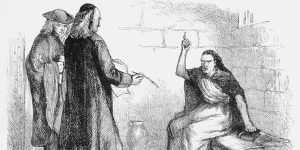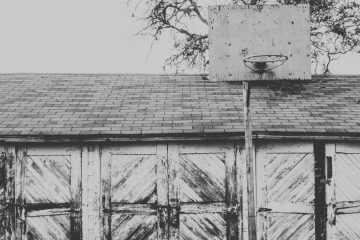What Happened On June 10th?
On June 10, 1692, the town of Salem, Massachusetts, Bridget Bishop was hanged, which began the infamous Salem witch trials. This was a period of mass hysteria and paranoia that led to the execution of twenty people and the imprisonment of many more.
Brewing Trouble
The late 17th century in Salem experienced social, economic, and religious unrest. The small Puritan community faced tensions, exacerbated by recent hardships such as harsh winters, crop failures, and attacks from neighboring Native American tribes. These stresses created a fertile ground for fear and suspicion. In this climate, accusations of witchcraft provided a convenient outlet for communal anxieties. The fear of witches often targeted women who defied societal norms, such as those who were outspoken or financially independent, contributing to the heightened paranoia.
The Unconventional Bridget Bishop
Bridget Bishop, a widow in her 60s, became the first to be tried and executed for witchcraft in Salem. Known for her independent spirit and unconventional behavior, she became an easy target for accusations. Bishop often wore flashy clothes and ran a tavern, which the strict Puritanical norms of the time frowned upon.
Her defiance of societal expectations made her an outsider, and in a community looking for scapegoats, she fit the profile perfectly. Bishop had been accused of witchcraft before, in 1680, but was acquitted due to lack of evidence. This prior accusation made her even more susceptible to the hysteria of 1692.

The Witch Hunt Begins
Bishop’s trial turned into hysteria and unsubstantiated claims. The court, led by Chief Justice William Stoughton, relied heavily on spectral evidence, a controversial and dubious form of testimony where the accusers claimed to see the ghost or spirit of the witch tormenting them. This type of evidence, unique to the American colonies, lacked concrete proof but the court accepted it nonetheless.
Bishop’s defense proved weak, as she faced a community gripped by fear and a legal system ready to validate their anxieties. Remarkably, during her trial, witnesses claimed that Bishop’s specter pinched, choked, and bit them, showcasing the extreme lengths to which accusers went to substantiate their claims.
A Steadfast Defense
Throughout her trial, Bridget Bishop maintained her innocence. She faced her accusers with a steadfast denial, challenging the validity of their claims. Her lack of legal counsel and the court’s predisposition towards finding guilt left her with little chance of acquittal. The court found her guilty based on the testimonies of the afflicted girls, who alleged that Bishop’s ghost had caused them great harm.
This conviction reflected the town’s collective panic more than any real evidence of witchcraft. Interestingly, some historians believe that personal vendettas and property disputes often fueled these accusations, rather than genuine belief in witchcraft.
Gallows Hill
On the morning of June 10th, authorities led Bridget Bishop to Gallows Hill, a site that would soon become notorious for the execution of accused witches. The atmosphere was charged with a mix of fear, curiosity, and a morbid sense of justice. Townspeople gathered to witness the execution, their faces a tapestry of emotions reflecting the deep-seated anxieties of the time.

Gallows Hill was not a specific location but rather a general area believed to be where the executions took place; the exact spot remains a subject of debate among historians. Additionally, the executioner, George Corwin, reportedly kept the property of executed witches as part of his payment, adding a grim layer of profiteering to the proceedings.
Echoes of Fear
The execution of Bridget Bishop did not quell the fears of witchcraft in Salem; rather, it intensified the hysteria. The trials and executions continued, driven by the same mix of fear, superstition, and the desire for scapegoats. Families were torn apart, and the fabric of the community was irrevocably damaged. Years later, with the intervention of more rational minds and the eventual apology from the Massachusetts government, the community began to heal and recognize the grave injustices that had been committed. Several of the judges later expressed regret for their roles in the trials, and Judge Samuel Sewall publicly confessed his guilt in 1697.
Ann Putnam Jr.’s Apology
In 1706, Ann Putnam Jr., one of the primary accusers, publicly apologized for her role in the trials, expressing remorse for the suffering she had caused. This apology was rare amid the broader efforts to reconcile and move past the tragic events. Putnam stated, “It was a great delusion of Satan that deceived me in that sad time.”
The story of Bridget Bishop and the Salem witch trials continues to resonate as a cautionary tale. Today it reminds us of the perils of scapegoating and the importance of rationality in times of crisis. Remarkably, the witch trials are often cited as an early example of the need for a more robust legal system, one that emphasizes evidence and reason over fear and superstition.





